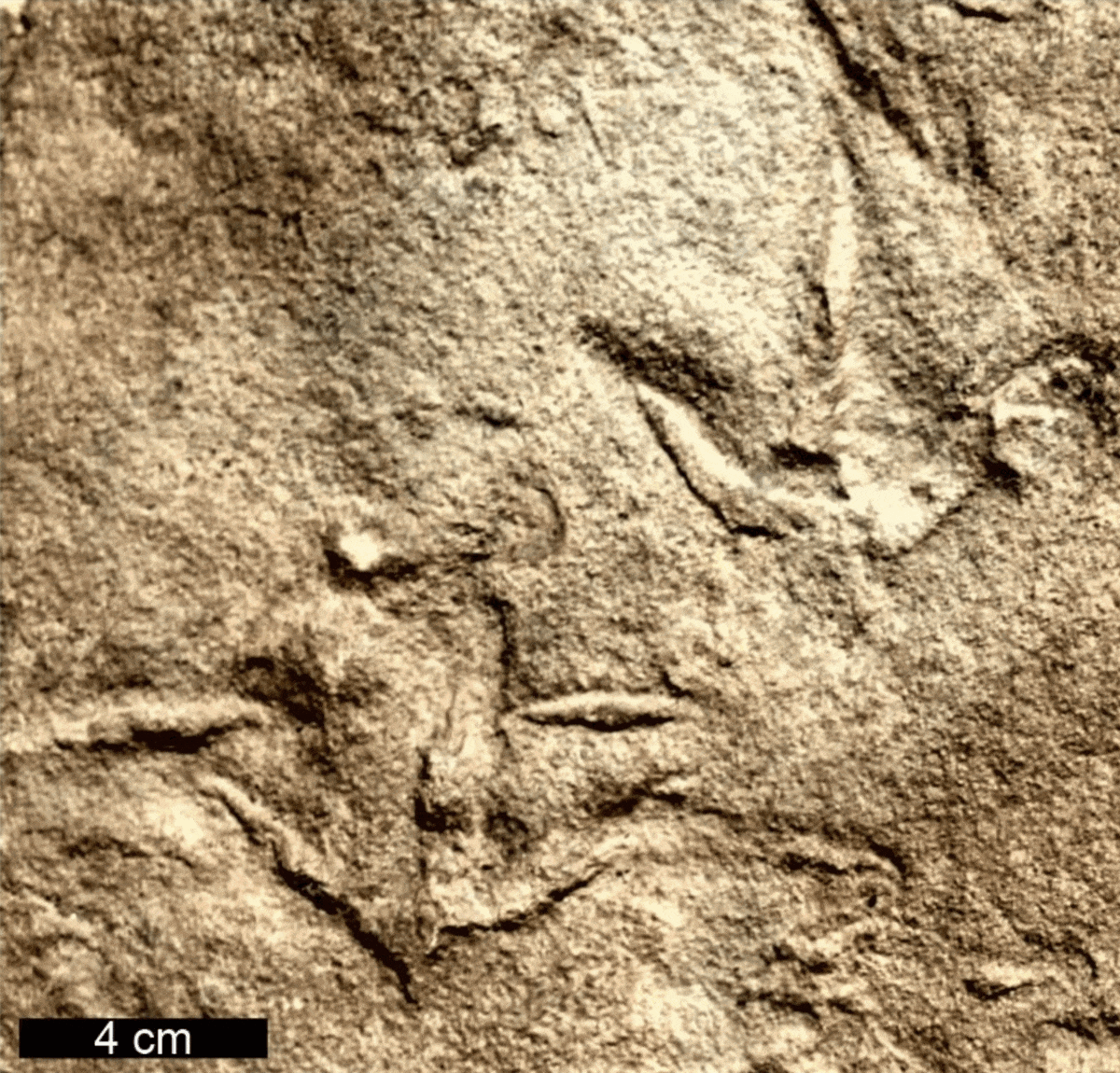Fossils
The Most Anticipated Museum Openings of 2024
Scheduled to launch this year are new institutions dedicated to astronomy, Nintendo and women artists
Meet Elma, a Woolly Mammoth Who Roamed Far and Wide More Than 14,000 Years Ago
By analyzing a fossilized tusk, scientists have pieced together the animal's movements
Fossils Reveal a Possible New Tyrannosaur Species, the Closest Relative of T. Rex
The remains, dug up in the 1980s, might shed light on T. rex's mysterious origins, according to a new paper
Miners Discover Seven-Foot Mammoth Tusk in North Dakota
After coal mine workers found the 50-pound specimen, paleontologists studied the site and uncovered more than 20 additional bones
This 288-Million-Year-Old Fossilized Scrap of Skin Is the World's Oldest
The remains, found in an Oklahoma cave, belonged to a lizard-like reptile
Early Primates May Have Feasted on Soft, Sweet Fruits
An analysis of more than 400 fossilized teeth suggests the creatures weren't eating many seeds, nuts or other hard foods
Scientists Uncover the Earliest Fossil Evidence of Photosynthesis
Ancient cyanobacteria contained structures for producing oxygen around 1.75 billion years ago, according to a new study
Decades-Long Debate on 'Teenage' Tyrannosaur Fossils Takes Another Turn
A new paper adds to evidence suggesting a group of disputed fossils, identified by many scientists as young T. rex, are actually another species
Thirteen Discoveries Made About Human Evolution in 2023
Smithsonian paleoanthropologists reveal some of the year’s most fascinating findings about human origins
Fossil Hunters Uncover Prehistoric 'Sea Monster' Skull at a U.K. Beach
The six-and-a-half-foot-long pliosaur skull was excavated from a rock cliff in England and may belong to a new species, scientists say
The Top Ten Dinosaur Discoveries of 2023
From uncovering a tyrannosaur’s last meal to unlocking the secrets of a dino with a really long neck, these were the year’s biggest stories
Once Thought to Be Plants, These Rare Fossils Are Actually Baby Turtles, Scientists Say
The prehistoric specimens found in Colombia could represent one of the oldest and largest turtle species to ever exist
Amazing Fossil Preserves Teenage Tyrannosaur’s Last Meal
Stomach contents from a juvenile Gorgosaurus reveal it feasted on small, bird-like species 75 million years ago
Male Mosquitoes May Have Once Sucked Blood, Amber Fossils Suggest
Today, only female mosquitoes feed on the blood of animals, while males are satisfied with plant juices
Mysterious Creatures With Bird-Like Feet Made These Tracks Long Before Birds Evolved
The footprints pre-date the earliest known fossils of avian ancestors by roughly 60 million years, per a new study
Fossil Hunter Pulls Massive Mammoth Jawbone Out of Florida River
John Kreatsoulas, who made the discovery while diving in southwest Florida, initially thought the 60-pound mandible was a log
Australia's Oldest Known Bird Tracks Are 120 Million Years Old
In that age, the continent was attached to Antarctica, but migrating animals still traveled to the polar region for sustenance
Ancient Whales Were the Biggest and Smallest of Their Kind to Ever Roam the Oceans
New discoveries show how whale diversity exploded after the dinosaurs disappeared
These Large, Flesh-Eating Lampreys Lived 160 Million Years Ago
Paleontologists in China recently unearthed the fossilized remains of two new species of lamprey, a group of jawless fish that dates back 360 million years
During the Age of Dinosaurs, Some Birds Sported Toothy Grins
The often overlooked animals thrived for millions of years
Page 2 of 51
:focal(2969x1810:2970x1811)/https://tf-cmsv2-smithsonianmag-media.s3.amazonaws.com/filer_public/5e/97/5e97f9fc-24b5-4acf-b7fd-bc5078043b4d/1c1a07e3-5a0e-4b94-b0c0-eaae64150c83.jpg)
:focal(512x341:513x342)/https://tf-cmsv2-smithsonianmag-media.s3.amazonaws.com/filer_public/d7/93/d7937ea8-25b4-42d5-976b-57dc156d80bc/karen-spaleta-sampling-swanpoint-mammoth-tusk-1-1024x682.jpg)
:focal(1181x844:1182x845)/https://tf-cmsv2-smithsonianmag-media.s3.amazonaws.com/filer_public/c9/6f/c96f8ae8-3fe2-4465-ba50-88984e639f5a/new-dinosaur-species-m.jpg)
:focal(960x722:961x723)/https://tf-cmsv2-smithsonianmag-media.s3.amazonaws.com/filer_public/54/ce/54cea99b-456a-4de7-9cee-3d30837d6722/fmm_6-8-2023_05.jpeg)
:focal(800x602:801x603)/https://tf-cmsv2-smithsonianmag-media.s3.amazonaws.com/filer_public/a1/30/a130b8ef-033f-4a49-8780-341693394317/fossilized-skin_credit-current-biology-mooney-et-al.jpg)
:focal(700x527:701x528)/https://tf-cmsv2-smithsonianmag-media.s3.amazonaws.com/filer_public/dc/de/dcde6ff1-e24d-4685-9dff-1368b7a66262/untitled_design.jpg)
:focal(2000x1333:2001x1334)/https://tf-cmsv2-smithsonianmag-media.s3.amazonaws.com/filer_public/95/7b/957bb0c1-b214-4140-8727-11b20fe2cffd/gettyimages-1242412688.jpg)
:focal(350x230:351x231)/https://tf-cmsv2-smithsonianmag-media.s3.amazonaws.com/filer_public/fd/0b/fd0b31c6-07df-4c2b-b236-0bf9409effe2/low-res_nanotyrannus_versus_baby_t_rex_reduced.jpg)
:focal(2603x1735:2604x1736)/https://tf-cmsv2-smithsonianmag-media.s3.amazonaws.com/filer_public/78/56/78561392-632d-43a8-87a4-a0784440ca05/paleoart-santaelina-prsb-jo.jpg)
:focal(1011x674:1012x675)/https://tf-cmsv2-smithsonianmag-media.s3.amazonaws.com/filer_public/ab/26/ab26ff66-bbe3-4841-b014-02e1ae4ad621/00xp-pliosaur1-superjumbo.webp)
:focal(800x602:801x603)/https://tf-cmsv2-smithsonianmag-media.s3.amazonaws.com/filer_public/8b/0e/8b0ef95c-1c54-4edf-a049-1729608d5f2c/topdinos2023-v2.jpg)
:focal(502x325:503x326)/https://tf-cmsv2-smithsonianmag-media.s3.amazonaws.com/filer_public/84/a3/84a34abe-ef48-4370-82bc-d6752b1342ce/ezgif-1-73be12d57b.png)
:focal(709x533:710x534)/https://tf-cmsv2-smithsonianmag-media.s3.amazonaws.com/filer_public/c3/42/c342a24b-02a4-47b5-be7d-0b14dfc10ab8/16-gorgosaurus-consumption-artist-julius-csotonyi-copyright-royal-tyrrell-museum-of-palaeontology_web.jpg)
:focal(2750x1781:2751x1782)/https://tf-cmsv2-smithsonianmag-media.s3.amazonaws.com/filer_public/4b/2b/4b2b929b-94dc-45f7-add4-c6373db676f8/gettyimages-540806304.jpg)

:focal(720x542:721x543)/https://tf-cmsv2-smithsonianmag-media.s3.amazonaws.com/filer_public/26/c9/26c9ad1d-3d47-4983-8439-d95fc00720b6/400220364_362017989722004_4470277198971332636_n.jpg)
:focal(754x567:755x568)/https://tf-cmsv2-smithsonianmag-media.s3.amazonaws.com/filer_public/b3/f0/b3f07d9c-0644-48a2-8c37-c1f24a2ddb9c/ff-1-3_web.jpg)
:focal(800x602:801x603)/https://tf-cmsv2-smithsonianmag-media.s3.amazonaws.com/filer_public/10/a7/10a703a6-4837-4662-8ca6-9c6f70d91f03/gettyimages-89172621_web.jpg)
:focal(1280x719:1281x720)/https://tf-cmsv2-smithsonianmag-media.s3.amazonaws.com/filer_public/4d/bc/4dbcf28c-1a83-4a52-9974-af75be680f0d/2.jpeg)
:focal(800x602:801x603)/https://tf-cmsv2-smithsonianmag-media.s3.amazonaws.com/filer_public/94/c3/94c3279b-63cd-4776-bc4e-b0c2c65bd26c/hesperornis_web.jpg)